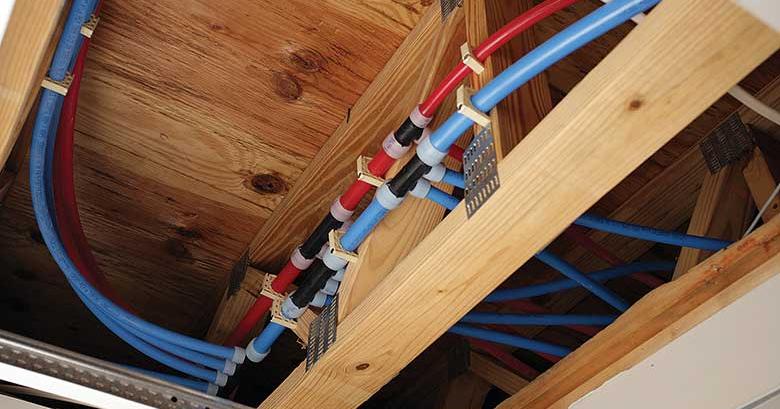Are you curious to know what is PE RT?? You have come to the right place as I am going to tell you everything about PE RT? in a very simple explanation. Without further discussion let’s begin to know what is PE RT??
In the realm of plumbing, advancements in technology and materials have led to innovative solutions that enhance durability, flexibility, and efficiency. One such breakthrough is PE-RT (Polyethylene of Raised Temperature Resistance), a versatile plumbing pipe material that has revolutionized the industry. In this blog, we will explore the characteristics, benefits, and applications of PE-RT, and delve into why it has become a popular choice for modern plumbing systems.
What Is PE RT?
PE-RT is a type of polyethylene pipe that has been specially designed to withstand higher temperatures and pressures compared to traditional PEX (cross-linked polyethylene) pipes. It is created through a process that involves the copolymerization of ethylene with octene, resulting in a pipe material with excellent temperature resistance and long-term performance.
Characteristics And Benefits
- Temperature Resistance: PE-RT pipes are specifically engineered to withstand elevated temperatures, making them suitable for various applications. They can handle hot water systems, including radiant floor heating, hydronic heating, and residential plumbing, where temperatures can reach up to 180°F (82°C).
- Flexibility and Easy Installation: PE-RT pipes are highly flexible, allowing for easy installation even in confined spaces or around obstacles. Their flexibility reduces the need for complex fittings and joints, resulting in a streamlined and efficient plumbing system.
- Durability and Longevity: PE-RT pipes are highly durable and resistant to corrosion, chemicals, and scaling. They have excellent resistance to stress cracking, making them less prone to leaks and failures over time. This durability ensures a longer lifespan for the plumbing system, reducing the need for frequent repairs or replacements.
- Thermal Performance: PE-RT pipes offer superior thermal performance, minimizing heat loss in hot water systems. Their insulation properties help maintain consistent water temperature, improving energy efficiency and reducing heating costs.
- Cost-Effective: PE-RT pipes provide a cost-effective plumbing solution due to their ease of installation, reduced labor costs, and long-term durability. The combination of these factors makes them a practical choice for both residential and commercial plumbing projects.
Applications
PE-RT pipes find applications in various plumbing systems, including:
- Radiant Floor Heating: The excellent temperature resistance and flexibility of PE-RT pipes make them an ideal choice for radiant floor heating systems. They can efficiently distribute hot water throughout the flooring, providing comfortable and energy-efficient heating.
- Potable Water Systems: PE-RT pipes are approved for use in potable water systems. Their resistance to corrosion and scaling ensures clean and safe water supply, making them suitable for both residential and commercial plumbing applications.
- Hydronic Heating Systems: PE-RT pipes are commonly used in hydronic heating systems, where they transport hot water to radiators, baseboard heaters, or other heat exchangers. The temperature resistance of PE-RT pipes ensures optimal performance in these heating applications.
- Residential Plumbing: PE-RT pipes are widely used in residential plumbing, including water supply lines, distribution systems, and plumbing repairs or renovations. Their versatility and reliability make them a preferred choice for modern plumbing installations.
Conclusion
PE-RT (Polyethylene of Raised Temperature Resistance) has ushered in a new era in plumbing, providing a versatile and durable solution for various applications. With its exceptional temperature resistance, flexibility, and longevity, PE-RT pipes have become a popular choice for radiant floor heating, hydronic heating, and potable water systems. Embracing the advantages of PE-RT can lead to more efficient, reliable, and cost-effective plumbing systems that meet the demands of modern living.
You can collect more information about such topic on Howtat
FAQ
Is Pert Better Than Pex?
System performance
Higher pressure/temperature ratings for radiant and potable-plumbing applications (Uponor PEX pipe is rated to 200ºF at 80 psi; PE-RT is only rated to 180ºF.)
What Is The Difference Between Pert And Pex?
PERT is only required to withstand 48 hrs and cannot meet the same temperature / pressure ratings as PEX. PEX is required to withstand 100 hrs before failure. Pexflow PEX-A is tested to withstand more than 1,000 hrs.
What Is The Raw Material For Pert?
The main raw material used for heat-resistant polyethylene (PE-RT) pipes and fittings is ethylene-octene (or hexene, butene) copolym.
How Can You Tell The Difference Between Pex And Polybutylene?
PEX tubing is cross-linked polyethylene. Even though they are both plastic, PEX tubing has different properties than polybutylene. PEX is tougher, can withstand heat better, and harder to cut through than polybutylene. It’s been used safely for portable water in the United States for the past two decades.
I Have Covered All The Following Queries And Topics In The Above Article
What Is PE RT
What Is Pe-Rt Pipe
What Is PE RT Pipe
What Is Pe-Rt Tubing
What Is Pe^Rt Math
Pe^Rt Is What?
A PE RT What Is E
What Is A(T)= Pe^Rt Used For
What Is A(T)= Pe^Rt
What Equation Is A(T) = Pe^Rt
What Is PE RT
What kind of pipe is PERT
